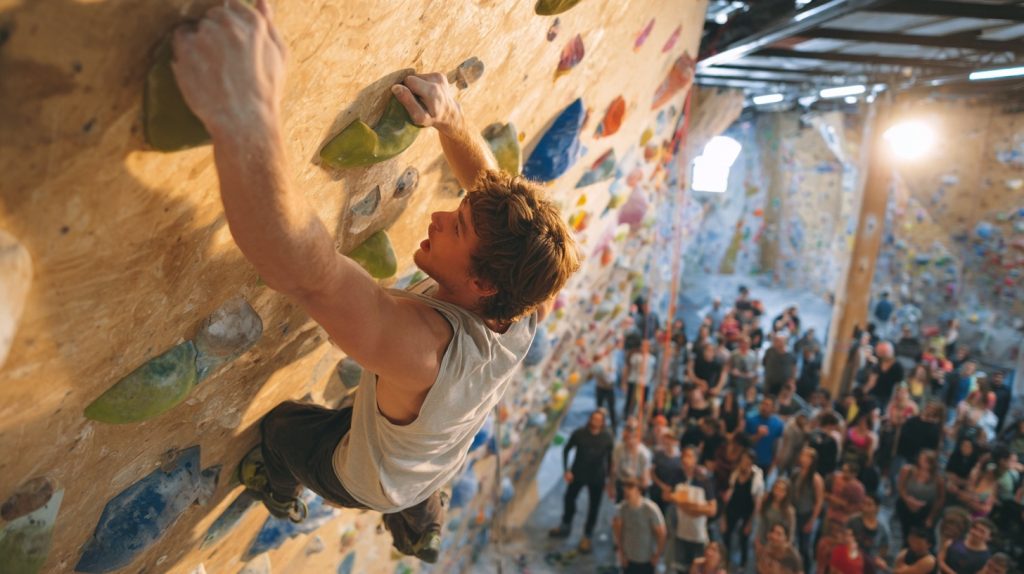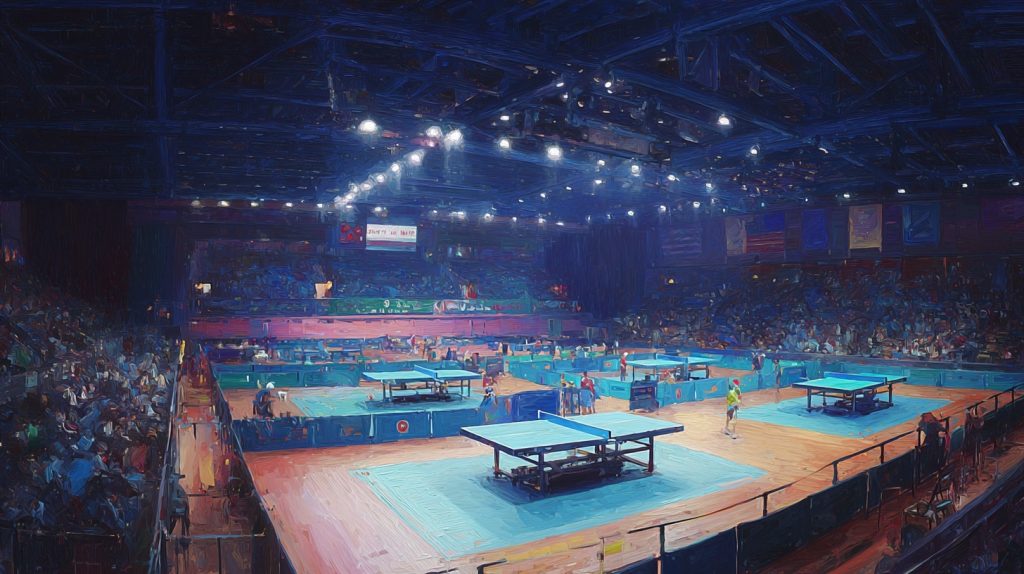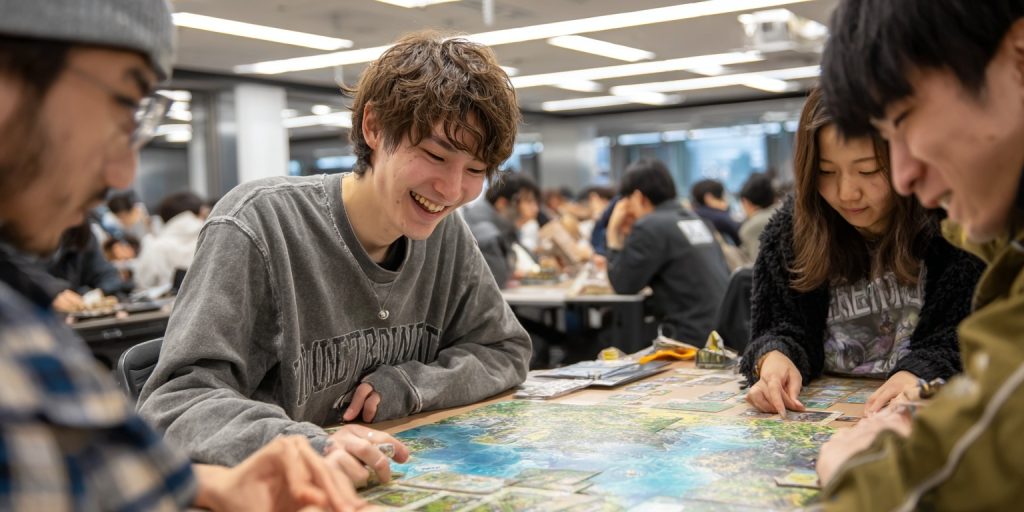By Futurist Thomas Frey
On the edge of a midsize American city, a massive new building gleams under the morning sun—half sports complex, half digital command center. Inside, you can hear sneakers squeaking on hardwood, drone motors whirring overhead, and the steady hum of gaming PCs running tournaments livestreamed to audiences worldwide. The crowd is wonderfully diverse: teenagers adjusting VR headsets, seniors playing pickleball, parents cheering from bleachers. This isn’t your grandfather’s rec center. It’s the prototype for something entirely new: the Municipal Tournament Center.
Why Now? Why Tournaments?
America has always been a nation of competitors. We’ve built elaborate infrastructures around competition—high school gymnasiums, county fairgrounds, debate halls, science fair venues. But these spaces exist in isolation, serving narrow purposes and sitting empty most of the time. A basketball court can’t host a robotics competition. A debate hall can’t accommodate esports. A swimming pool can’t pivot to drone racing.
Meanwhile, competition itself has exploded in diversity. Physical sports continue thriving alongside cognitive challenges like math olympiads and chess tournaments. Digital competitions—esports, coding challenges, drone racing—draw millions of participants. Cultural contests from cooking competitions to film festivals engage entirely different communities.
What if we stopped building single-purpose facilities and started building adaptive competition ecosystems? What if one civic building could host basketball in the morning, esports in the afternoon, and a robotics challenge in the evening—all while generating revenue, building community, and discovering talent?
That’s the Municipal Tournament Center concept: a civic facility designed around competition as a unifying cultural form, flexible enough to adapt to whatever contests emerge next.

The Architecture of Adaptation
The revolutionary aspect isn’t scale—it’s flexibility. Traditional civic buildings lock in their purpose through fixed architecture. A gymnasium is always a gymnasium. A pool is always a pool. The Tournament Center inverts this logic through modular design.
Moveable walls create spaces from intimate 50-person venues to 2,000-seat arenas. Convertible seating systems reconfigure in hours. Flexible lighting adapts from broadcast-quality illumination for streaming tournaments to ambient lighting for casual play. Acoustic panels adjust to dampen sound for concentration-dependent events or amplify crowd energy for competitive spectacles.
Underneath this physical flexibility runs an intelligent digital backbone. Sensors track everything: attendance patterns, energy consumption, equipment wear, even crowd mood through aggregate movement and noise analysis. A unified control platform manages scheduling, climate, lighting, and logistics. AI systems analyze historical data to predict which events will draw crowds, automatically allocating space and staff efficiently.
The building literally learns from experience. Each tournament generates data that improves future planning. The facility becomes smarter with use rather than deteriorating.
The Self-Funding Recreation Model
Here’s where the economics get interesting: unlike traditional recreation centers that drain municipal budgets, the Tournament Center is designed as a self-sustaining economic engine.
Revenue streams are diverse and complementary. Tournament hosting fees from organizers. Ticket sales for spectator events. Private rentals for corporate team-building or celebrations. Training academies offering coaching in everything from basketball to competitive gaming. Sponsorships and naming rights from local businesses wanting association with civic pride. Vendor booths and food courts serving participants and spectators. Membership programs for regular users. Streaming rights for digital tournaments with global audiences. Merchandise sales celebrating local teams and achievements.
Each tournament generates both civic engagement and economic return. Regional competitions attract travelers who fill hotels and restaurants. Esports events draw online viewers who boost the city’s profile. Cultural contests celebrate local talent while generating media coverage. The center becomes year-round economic infrastructure rather than seasonal amenity.
Cities watching malls die and downtown districts hollow out need new gathering spaces that combine commerce with community. The Tournament Center offers exactly that—a destination that’s simultaneously public square, entertainment venue, and economic catalyst.

Competition as Talent Infrastructure
Every champion starts somewhere, usually in civic spaces that provided early opportunities to compete. But access to quality competitive infrastructure is wildly unequal. Elite private clubs train future Olympians. Well-funded school districts offer robotics programs. Wealthy suburbs build esports arenas.
The Municipal Tournament Center democratizes access to competition infrastructure. A kid interested in drone racing finds equipment, coaching, and competitions without needing wealthy parents. A senior discovering competitive chess joins leagues without joining expensive clubs. A teenager passionate about game design enters coding tournaments that could launch careers.
It creates talent pipelines across disciplines. Local competitions feed regional tournaments feed national championships—all accessible through public infrastructure. The next chess grandmaster or esports champion or robotics engineer might emerge not from privilege but from persistent participation in municipal competitions.
More broadly, it teaches that excellence comes from practice, feedback, and incremental improvement—lessons that transfer far beyond individual competitions into education, career, and citizenship.
The Hybrid Future of Play
The false dichotomy between physical and digital recreation is collapsing. The future isn’t screens versus sports—it’s integrated experiences that blend both.
Imagine spectators watching an esports match while a parallel physical version plays simultaneously on an adjacent court. Augmented reality overlays let audiences view player statistics, strategic analysis, or instant replays through AR glasses while watching live action. Drone racing competitions unfold in physical arenas with digital enhancements projecting trajectories and speeds for spectators.
Every competition becomes both local gathering and media event. Every media event reinforces local community. The Tournament Center is designed for this convergence—broadcast studios integrated with competition spaces, streaming infrastructure built into facility architecture, viewing areas optimized for both live attendance and digital participation.
Recreation isn’t just about playing anymore. It’s about presence—feeling part of something larger than yourself, whether you’re competing, spectating live, or watching remotely while representing your community.

Rebuilding Civic Identity Through Competition
Local governments desperately need new ways to build civic pride and community connection. Traditional approaches—parades, town halls, community centers—feel increasingly outdated to younger generations.
Competition offers a different pathway. Inter-neighborhood leagues where communities compete for bragging rights. Annual “Mayor’s Cup” tournaments across multiple disciplines. Cultural festivals showcasing local talent through friendly contests. These events create stories, rivalries, heroes, and shared memories that bind communities together.
The Tournament Center becomes both gathering place and identity project—a physical manifestation of what the community values and celebrates. Cities known for their tournament culture attract residents who value competition, learning, and community. The facility itself becomes civic brand.
Final Thoughts
For over a century, cities built parks, pools, and gyms to promote wellness and community. These remain valuable, but 21st-century recreation demands something more adaptive—infrastructure that unites digital and physical, mental and athletic, local and global competition.
The Municipal Tournament Center isn’t just a building. It’s a new civic architecture recognizing that competition, properly designed, connects rather than divides. It’s where neighbors become teammates, strangers become fans, and local governments rediscover the transformative power of shared striving toward excellence.
In an age of fragmentation and isolation, the future of recreation might just be the future of community itself—built one tournament at a time.
Related Links:
The Economics of Multi-Purpose Civic Facilities
How Esports is Reshaping Public Recreation
Adaptive Architecture in Modern Community CentersRetry


